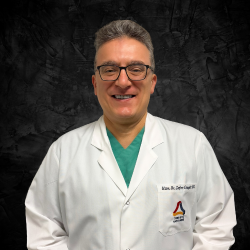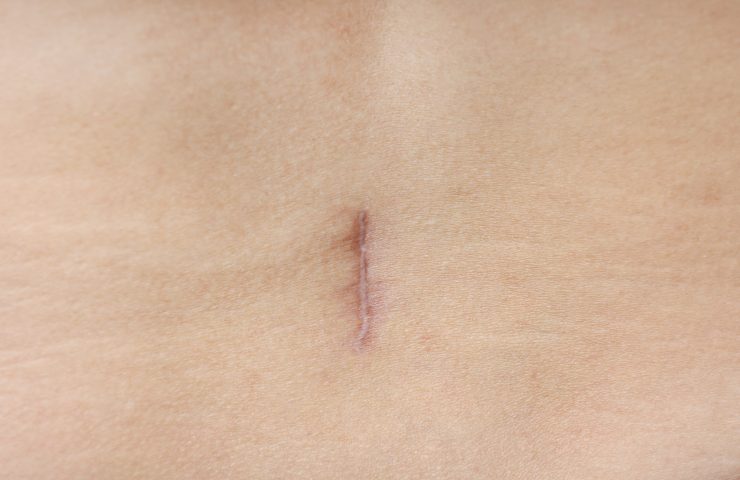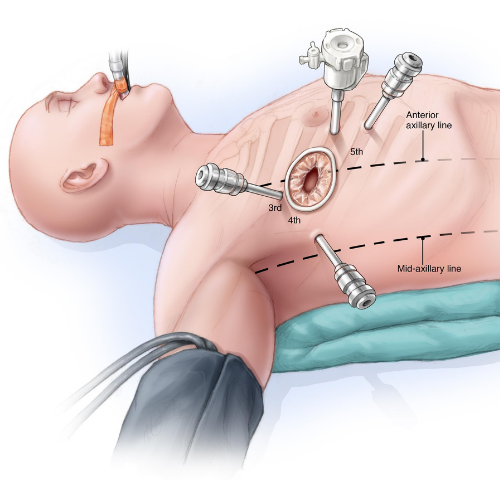Kalp ve Damar Cerrahisi
Prof. Dr. Tayfun Aybek Kimdir?
Hakkında
Kalp ve Damar Cerrahisi
Yenilikçi Yöntemler




TOBB ETÜ Kalp ve Damar Cerrahisi
Sayılarla Biz!
Prof.Dr.Tayfun Aybek
Hasta Görüşleri
Eskişehir ‘de masada kalır diye anjiyo bile yapılamayan bana… İŞİN KOLAY…
Kontrollerime giderken kardeşimi görmeye gidiyor gibi hissettim. Yolu hep açık olsun kıymetli hocamın…
Sekreteri Öznur hanım’ı da ayrıca kutluyorum.
Ekip derseniz ona keza, teyzecim, ablacım, aşkım, sultanım… onlara naz yapacağım diye aklım gitti. Hiç çürük elma yokkk
Babannemin dualarını ettim hepsine, varolsunlar, iyilerle karşılaşsınlar.
Bu arada çok özel hastane gördüm bu kadar iyisi yoktu. Eşimle özel serviste yattık, adam nefes alamıyor, bir çamaşır suyundan vazgeçiremedik. Neler neler… çok takdir ediyorum, çarşaf istemiyoruz değiştirelim diye herşey tıkır tıkır…
Ha bu arada hassasiyetimiz hasta mahremiyetine çok önem veriyorlar.
Aklıma gelenler…
Tabii inşallah bir daha işimiz düşmez.
Sağolun, varolun..
Tayfun hocam, emeklerinize sağlık, iyi ki varsınız.
He is our miracle doctor who performed mitral valve surgery on my 76-year-old mother, Hafize Açan, on 12.02.2024. After long research, we applied to him. He always gave confidence from the first moment to the last moment. My mother was discharged a week later. They will monitor her condition remotely with the "Dakik" application for a month. During our one-week hospital stay, Ms. Öznur, our nurses and other team members of our doctor were incredibly good. We cannot thank them enough. Likewise, TOBB hospital thinks of everything for you and fulfills it without you asking. A hospital you can choose without hesitation. Of course, Mr. Aybek deserves the biggest praise. As my fellow countryman (Eskişehir), I am proud of him. I wish him a long, healthy and peaceful life. May everything be better than you hope. Best regards sir, I'm glad to have you.
Ekibimiz
Doktorlarımızla Tanışın
Kalp ve Damar Cerrahisi
İnanılmaz Hikayeler
YAŞAM ENERJİSİ
Daha sonra, nispeten normal bir hayata döndüğünde, Nisan 2023'te, 38 yaşında aritmi nedeniyle kalp piline ihtiyaç duymuş, başka bir sağlık kuruluşunda kalp pili implantasyonunun ardından hastanın iyileşme sürecinde sorunlar olmaya başlamıştı.
Prof. dr. Tayfun Aybek
Güncel Yazılarımız
İçerikler
Sosyal Medyada Biz!
@ prof.dr.tayfunaybek . Kas 24
Robotla Bypass ameliyatı yeni mi? Hemen öğren👇
Bugün sana çok "yeni teknoloji" gibi görünen robotik bypass cerrahisi aslında 28 yıl önce başlayan bir serüven....
Prof. Dr. Tayfun Aybek 1998 yılında Da Vinci sisteminin ilk kez kullanıldığı Frankfurt Üniversitesi Robotik Cerrahi ekibinde yer aldı.
Bu vakalarda:
• Göğüs kafesi hiç açılmadan
• Tamamen endoskopik (kapalı) yöntemle ameliyat yapıldı.
Aynı dönemde Başasistan olarak görevine devam eden Prof. Dr. Tayfun Aybek ve Frankfurt Robotik Kalp Cerrahisi ekibi toplam 168 vakada, göğüs kafesini hiç açmadan yapılan kalp ameliyatlarına imza attı.
Bugün kalp cerrahisinde:
• 🤖 Robotik cerrahi
• ✂️ Küçük kesi (minimal invaziv) yöntemler
gibi farklı tekniklerle, daha az kesi, daha az ağrı ve daha hızlı iyileşme hedefleniyor.
Ancak unutma:
“En iyi yöntem” genelde değil, hastaya özel belirlenir.
Kalbin yapısı, damarların durumu, ek hastalıklar ve riskler birlikte değerlendirilir.
⸻
🤔 Şimdi söz sende:
Robotla mı, küçük kesi ile mi?
Siz olsanız hangi yöntemi tercih ederdiniz?
Yorumlarda buluşalım, sorularınızı da bekliyoruz. 💬
🔎 Bu içerik bir tedavi vaadi değildir; kalp cerrahisi hakkında farkındalık oluşturmak amacıyla paylaşılmaktadır.
#robotikcerrahi #bypass #kalpcerrahisi #davincisurgery #Minimalİnvaziv #kalpsağlığı #heartsurgery #cardiacsurgery #cardiovascular #cardiovascularhealth #cardiovascularsurgery #picoftheday #photooftheday #instagood #cardiologia

@ prof.dr.tayfunaybek . Kas 21
Kalbinin içinde küçük bir top olsaydı nasıl olurdu?
58 yaşındaki hasta; kalp içi tümör, ciddi mitral ve triküspid yetmezlik ve atriyal fibrilasyon nedeniyle akciğer ödemiyle yoğun bakımda, solunum cihazına bağlıydı.
Kapalı yöntemle (5 cm kesi) kalp içi tümör çıkarıldı; mitral ve triküspid kapak tamiri ile atriyal ablasyon aynı seansta yaklaşık 2 saatte tamamlandı.
Bu paylaşım tedavi vaadi değildir; kalp cerrahisindeki güncel imkânlara dikkat çekmek amacıyla hazırlanmıştır.
***Her cerrahi veya girişimsel işlemde sonuçlar kişiden kişiye değişebilir; işlem öncesi hekiminizden detaylı görüş almanız önerilir.
#picoftheday #photooftheday #cardiovascularsurgery #instagram #cardiologia #heart #heartsurgery #tumor

@ prof.dr.tayfunaybek . Eki 31
🧡 Bal kabağı kalbimizi nasıl koruyor biliyor musun?
🎃 Halloween’in tatlı kahramanı bal kabağı, aslında kalbinizin gizli dostu!
Potasyum, lif ve antioksidan zenginliğiyle tansiyonu dengeler, damar sağlığını korur, kalp kasını güçlendirir.
Bu Halloween’de tatlıdan çok sağlığınızı hatırlayın. 💛
Kalbinizi korumak için doğanın sunduğu en güzel armağanlardan biri: Bal Kabağı.
👇 Siz bal kabağını en lezzetli haliyle nasıl tüketiyorsunuz?
Yorumlara yazın, birlikte kalbimize iyi bakalım. 🫀
❤️ Bu bilgiyi kaydet, kalbine iyilik yap.
💬 Yorumlara senin favori bal kabağı tarifini yaz.
🔁 Bu Halloween’de kalbine de bir iyilik yap — paylaş!
#kalpsağlığı #balkabağı #pumpkinpower #healthyheart #hearthealth #halloween #superfood #betacarotene #vitaminc #healthyhalloween #picoftheday #photooftheday #keşfetteyiz #cardiovascularsurgery #instagood

@ prof.dr.tayfunaybek . Eki 27
69 yaşında minimal invaziv kapak tamiri mümkün mü?
69 yaşındaki kadın hasta, posterior leaflet prolapsusu ve kord rüptürü nedeniyle ciddi mitral yetmezliği gelişmiş; akciğer ödemi ile yaşam kalitesi kritik seviyeye inmişti.
Minimal invaziv yöntem ile Carpentier tekniği, quadrangüler rezeksiyon ve ring implantasyonu yapılarak mitral kapak başarıyla tamir edildi.
📌 Büyük kesi yapılmadan,
📌 Kalp fonksiyonları korunarak,
📌 Aynı nefes — yeniden kazanıldı.
Bu paylaşım tedavi vaadi değildir;
kalp cerrahisindeki modern yaklaşımlara dair farkındalık amacıyla hazırlanmıştır.
👉Kalp sağlığıyla ilgilenen biri varsa bu videoyu onunla paylaşabilirsiniz — belki bir hayatı değiştirir.
#kalpcerrahisi #MitralKapakTamiri #minimali̇nvazivcerrahi #heartsurgery #cardiacsurgery #heartteam #farkındalık #picoftheday #photooftheday #cardiovascularsurgery #keşfetteyiz #patientstory #medicaleducation #instagood #follow #share #comment

@ prof.dr.tayfunaybek . Eki 26
Kalp cerrahisi böyle başladı…
Dün bugün gibi değildi — bir cesaret anı, milyonların hayatını değiştirdi.
⸻
1960’lar — Texas Heart Institute / St. Lukes Episcopal Hospital’da çekilen bu kare, koroner bypass cerrahisinin tarihî doğuşuna tanıklık ediyor.
Dr. René Favaloro’nun öncülüğünde; tıkalı koroner arterler safen ven greftiyle bypass edilerek kan akışı yeniden sağlandı.
Bugün dünya genelinde milyonlarca hastanın hayatını uzatan bu standart yöntemin başlangıcı — işte bu andı.
Bilim, cesaretle başlar…
Ve bazı kareler tıp tarihine not düşer.
⸻
#cardiacsurgery #medicalhistory #heartsurgery #clevelandclinic
#cardiovascularsurgery #bypasssurgery #openheartsurgery
#cardiology #medicaleducation #surgerylife
#kalpcerrahisi #sağlık #picofthedays #photooftheday

@ prof.dr.tayfunaybek . Eki 25
Dünyanın en büyük kalbinin sesi 3.2 km öteden duyulabiliyor! 🐋❤️
Mavi balinanın kalbi ortalama 180 kg ağırlığında,
yaklaşık 1.2 metre genişliğinde ve 1.5 metre yüksekliğinde dev bir organ!
Aortları ise 23 cm genişliğinde — neredeyse bir çocuğun başı kadar…
Ve en çarpıcı detay: Kalp atışları 3.2 km uzaktan duyulabiliyor.
Dünyanın en büyük canlısının kalbi bile atarken
— sen kendi kalbini ne kadar önemsiyorsun?
Kalbin için bugün 1 iyi şey yap.
Bu videoyu kaydet, paylaş ve kalbini hafife alma.
#kalp #heartfacts #bilim #funfact #didyouknow #sciencereels #öğren #keşfet #farkındalık #sağlık #kalpsağlığı #reelsturkey #ᴇxᴘʟᴏʀᴇᴘᴀɢᴇ #viralreels #kesfetteyiz #foryou

@ prof.dr.tayfunaybek . Eki 24
Kalp ameliyatı sonrası aylarca yatmak zorunda mıyız? 🛏️⏳
İstanbul’da yaşayan, köpek eğitmeni bir hastamız; kapak cerrahisi olması gerektiğinde en çok “kesi” ve “iyileşme süresi”nden çekiniyordu.
Uygun hastalarda kalp kapak ameliyatları küçük kesi (minimal invaziv) yöntemle yapılabiliyor. ✂️🫀
Bu vakada sağ koltuk altından 5–6 cm kesi ile mitral + triküspid kapak tamiri 1 saat 45 dakikada tamamlandı ⏱️ ve hasta 5 gün sonra erken mobilizasyonla taburcu edildi. 🚶♀️🏠
Bu paylaşım tedavi vaadi değil; farkındalık amacıyla hazırlanmıştır. ℹ️
Bu yöntem hakkında medikal değerlendirme almak isterseniz,
kliniğimize danışmanlık randevusu oluşturabilirsiniz.📞📩
#kalpcerrahisi #kalp #kalpsağlığı #mvr #mitralvalve #picoftheday #photooftheday #patiseverler #patiseverlerindunyasi #köpekseverler #köpeksevgisi #köpekeğitimi #hayvansevgisi #hayvansever #cardiovascularsurgery

@ prof.dr.tayfunaybek . Eyl 9
Bilim, Emek ve Liderliğin Buluştuğu An ✨
TOBB ETÜ Tıp Fakültesi Hastanemizde gerçekleşen özel bir hasta ziyareti, tarihe not düşülecek bir anıya dönüştü.
🇹🇷 Sayın Cumhurbaşkanımız Recep Tayyip Erdoğan’ın TOBB ETÜ Tıp Fakültesi Hastanesi’ndeki özel bir hasta ziyareti sonrasında, ameliyatı başarıyla gerçekleştiren Kalp ve Damar Cerrahisi Anabilim Dalı Başkanı Prof. Dr. Tayfun Aybek ile vedalaşırken söylediği sözler, sağlık mesleğinin özünü özetler nitelikteydi:
💬 “Hocam, ilmine, eline, yüreğine sağlık.”
👨⚕️ Prof. Dr. Aybek’in bu derin teşekkür karşısında verdiği yanıt ise, hekimliğin özverisini bir kez daha hatırlattı:
💬 “Bizler bunun için buradayız, Sayın Cumhurbaşkanım.”
🌍 Bu samimi diyalog; bilimin ışığını, emeğin değerini ve insan hayatına adanmışlığın anlamını en yalın haliyle ortaya koymaktadır.
❤️ Sağlık, yalnızca bir meslek değil; milletin geleceğine, insanlığın yaşamına dokunan kutsal bir sorumluluktur.
Bizler, bu sorumluluğu en yüksek standartlarla taşımaya ve her hastamız için en iyi sonuçları sunmaya devam edeceğiz.
👉 Daha fazla bilgi için: www.tayfunaybek.com
____________________________________________________
#receptayyiperdogan #receptayyi̇perdoğan #erdoğan #erdogan #rte #türkiye #turkiye #istanbul #ankara #i̇zmir #cumhurbaşkanı #cardiothoracicsurgery #cardiacsurgery #cardiothoracicsurgeon #perfusionist #cardiacnurse #heart #cardio #doctor #medicine #nurse #medical #healthcare #surgery #anatomy

@ prof.dr.tayfunaybek . Ağu 10
Uyanıkken Bypass! Nasıl mı yapılır?
Evet, yanlış duymadınız… Kalp ameliyatı sırasında hastanızla konuştuğunuz, hatta sorular sorduğunuz anlar olabilir.
💡 Peki neden uyanık ameliyat yapılır?
✔ Genel anestezi riskini azaltmak için
✔ Akciğer fonksiyonu düşük hastalarda güvenliği artırmak için
✔ Ameliyat sonrası iyileşmeyi hızlandırmak için
🫀 Bu yöntemde, özel bölgesel anestezi ile göğüs bölgesi uyuşturulur.
Kalp durdurulmadan, atan kalpte bypass yapılır.
Hastamız konuşur, nefes alır… biz de kalbinde yaşam köprüleri kurarız.
📌 Kalp cerrahisinin bu ilginç yönünü gördüğünüzde, “Böyle bir şey mümkün mü?” diyeceksiniz.
❤️ Siz olsanız, uyanıkken ameliyatı tercih eder miydiniz?
#cardiovascularsurgery #kalp #kalpsağlığı #kalpvedamarsağlığı #kalpdamarcerrahı #kalpdamarsağlığı #kalpdamarhastalıkları #kalphastalıkları #cerrah #cerrahi #cerrahihastanesi #sağlık #sağlıkçalışanları #sağlıkturizmi #sağlıkiçin #medical #picoftheday #photooftheday #instagood #follow #instagram #share #instalike #instalike #comment #cardiologia

@ prof.dr.tayfunaybek . Ağu 6
🫀 Bu 5 bulgu, size kalp kapakçığınızın artık görevini tam yapamadığını söylüyor olabilir:
1️⃣ Ortostatik dispne: Ayakta belirginleşen nefes darlığı – sadece eforla değil, pozisyonla artıyorsa dikkat!
2️⃣ Pansistolik üfürüm: Sol 5. interkostal aralıkta, apex üzerinde stetoskopla duyulan tipik sürekli üfürüm
3️⃣ Sol atriyum dilatasyonu bulguları: EKO’da sol atriyumun genişlemesi – bu, geriye kaçan kanın sessiz bir işaretidir
4️⃣ Paroksismal noktürnal dispne: Gece uykudan nefes alamayarak uyanmak, pulmoner konjesyonun habercisi olabilir
5️⃣ Atrial fibrilasyon gelişimi: Mitral kapak hastalıklarında sık görülür; ani çarpıntı ataklarıyla başlar
📍 Mitral yetmezlik sadece yorgunluk yapmaz. Sinsi bir şekilde ilerler ve kalp boşluklarını şekil değiştirerek zorlar.
Erken tanı konmazsa, sol ventrikül fonksiyonları geri dönüşsüz zarar görebilir.
💬 Bu 5 bulgu sizde varsa, bir kalp sağlığı uzmanına başvurmadan geçmeyin.
❗️Her çarpıntı masum değildir. Her nefes darlığı akciğerden kaynaklanmaz.
📍 Unutmayın: Kalp kapak hastalıkları uzun süre sessiz seyredebilir, ama bedeli ağır olabilir.
#cardiovascularsurgery #heartsurgery #cardiologist #surgeon #heartsurgeon #heartvalve #mitralvalve #minimallyinvasivesurgery #minimallyinvasive #kalpcerrahisi #kalp #kalpsağlığı #kalpatışı #kalpdamarhastalıkları #kalphastalıkları #kalpdamarsağlığı #ameliyat #ameliyathane #picoftheday #photooftheday #instagood #follow #instagram #share #instalike #comment #cardiologia

@ prof.dr.tayfunaybek . Ağu 3
Dünya’nın değişik ülkelerinden gelen 16 Kalp Cerrahı bir Bilimsel amaç için toplandı.
Geçtiğimiz hafta, @edwardslifesciences ‘ın Irvine / Kaliforniya’daki genel merkezine davet edilmekten büyük bir onur duydum.
Bu çağrı, sadece bir ziyaretten ibaret değildi.
Dünyanın dört bir yanından gelen sayılı kalp cerrahlarıyla birlikte, bilimin, mühendisliğin ve tıbbın geleceğine dair çok değerli bir yolculuğa çıktık.
Bu değerli toplantıda:
▪ Kalp kapağı cerrahisindeki yenilikçi ürünleri doğrudan deneyimledik,
▪ Gerçek dana kalbi üzerinde teknik uygulamalar yaptık,
▪ Ar-Ge projeleri ve uluslararası iş birliklerine dair derinlikli tartışmalar yürüttük,
▪ Türkiye’de ortak bilimsel çalışmalar için güçlü bağlar kurduk.
Bu misafirperver ve vizyoner ev sahipliği için başta @edwardslifesciences yönetimine ve bilimsel ekibine,
tüm meslektaşlarıma teşekkür ederim.
Ülkemizi bu küresel platformda temsil etmek ve Türk tıbbını ileri taşımak benim için her zaman bir sorumluluk ve bir onurdur.
📌 Kalp cerrahisindeki bu tür ileri bilimsel gelişmeleri yakından takip etmek için sayfamı takip edebilirsiniz.
❤️ Bilimin kalbine bir adım daha yaklaşmak için videoyu beğenmeyi unutmayın.
💬 Sorularınızı ve merak ettiklerinizi yorumlarda paylaşın; birlikte keşfedelim.
#edwardslifesciences #cardiacsurgery #heartvalves #medical #technology #globalhealth #futureofmedicine #kalpameliyatı #arge #kalifornia #irvine #cardiovascularsurgery #cardiologia #photooftheday #picoftheday #instagood #follow #instagram #share #instalike #comment

@ prof.dr.tayfunaybek . Tem 25
Bypass’ta Hangi Damarlar Kullanılır?🤔
👨⚕️ 1. Göğüs Damarı (IMA)
Kalpten en yakın, en güvenilir damar.
10-15 yıl açık kalabilir.
⸻
🦵 2. Bacaktan Alınan Damar (Safen ven)
En sık kullanılan damarlardan biri.
Toplardamar yapısındadır.
⸻
💪 3. Kol Damarı (Radial arter)
Arter yapısıyla daha dayanıklıdır.
Ama önce test edilmesi gerekir.
⸻
🍽️ 4. Mide Damarı (Gastroepiploik arter)
Nadir kullanılır ama güçlü bir alternatiftir.
Özellikle tekrar ameliyatlarda devreye girer.
⸻
⚖️ Cerrah hangi damarın kullanılacağına hastaya özel karar verir.
📌 Sayfayı takip et, kalbine dair her detayı öğren.
💬 Sorularını yorumlara bırak, birlikte konuşalım.
❤️ Videoyu beğen, paylaş, bilgi yayılımına sen de katkı ver!
#cardiovascularsurgery #cardiologia #heart #heartsurgery #bypasssurgery #openheartsurgery #closedheartsurgery #medicine #minimalinvasivesurgery #surgery #minimallyinvasivesurgery #surgerylife #surgeryday #surgeryrecovery #picoftheday #photooftheday #instagood #follow #instagram #share #instalike #comment















